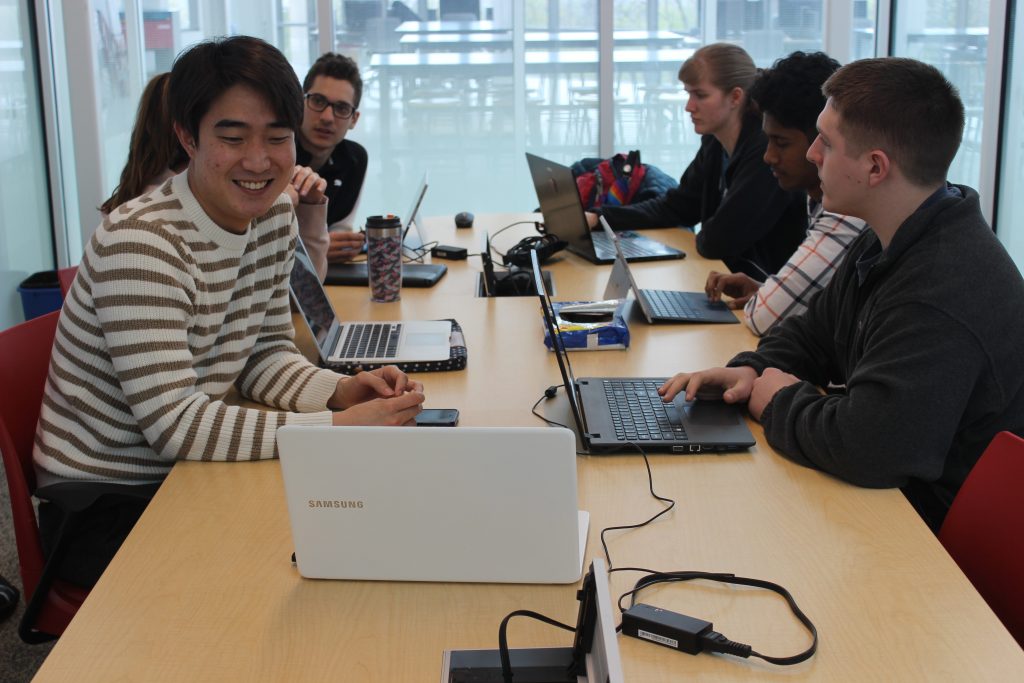Serve IT accepts applications from 501(c)3 organizations on a rolling basis with start periods generally coinciding with the beginning of the Spring and Fall semesters (early January and late August, respectively). Selected clients will meet with the clinic staff to determine the full scope of the project and discuss timelines. There is no cost associated with participation in the program.
Serve IT Nonprofit Clients
$6.9 MILLIONestimated client savings
630 PROJECTS COMPLETED
204 CLIENTS
Our services
The Serve IT Clinic can provide free technology projects for nonprofits and governmental agencies in Bloomington and Southern Indiana. While we do occasionally update our list, we are currently offering the following options:
Website Design or Re-design
Our student-led teams collaborate directly with clients to create or refresh websites that are visually engaging, intuitive and user-friendly.
We start with in-depth stakeholder research, applying top-tier user experience (UX) principles to craft a solid foundation. Every project is built with accessibility, mobile responsiveness, and security at the forefront, and will be accompanied by a style guide you can take with you to provide to future marketing professionals. Agencies may also request logo design/redesign.
Accessibility and Usability Assessments
Serve IT’s Accessibility team provide accessibility and usability assessments for websites, detailing the issues that need to be fixed and providing training for staff.
By improving accessibility, we empower organizations to create a more inclusive digital world.
EXPECTATIONS FOR APPLICANTS:
Attend total of two meetings, usually 3-4 weeks apart:
- Initial meeting for understanding agency, mission, typical users, and any concerns or usability complaints you have gotten from users.
- Final Accessibility presentation
Apply for Accessibility and Usability Assessments
Data Visualization Projects
Turning raw data into clear, actionable insights—that’s the power of data visualization. Our student teams leverage industry-leading tools like Power BI and Tableau to transform complex datasets into dynamic dashboards, interactive charts, and compelling visual narratives.
These tools allow agencies to:
- Analyze real-time data through live data streams, ensuring up-to-date insights.
- Explore trends with interactive elements that let users drill down into key metrics.
- Tell impactful stories by connecting data sources like the census to highlight critical issues (e.g., domestic violence rates).
Whether for internal reporting, strategic decision-making, or mission-driven storytelling, our dashboards provide clarity in a world of information overload.
Each 4–5-person student team—pre-trained on Tableau and guided by a graduate supervisor—works hands-on to craft tailored visual solutions for your needs.




How clients are chosen
Clients are chosen by our Advisory Council, based on 6 factors:
- Whether the organization meets or is presumed to meet the IRS definition of a charitable organization under section 501(c)(3)
- Whether the proposed project matches offerings and student ability
- Willingness of agency to work with students (being available, having tolerance for student learning gaps, etc)
- Degree to which agency mission supports the neediest members of our local community
- The relative stability of the organization
- The apparent need for the technology services provided
"I really want to reiterate how nice it was working with Tommy and Mary this semester. They were so organized, responsive, and really listened to our needs. It was SO HELPFUL having them to work with."
Dayna A Thompson M.S., CDP, LMHC, PAC Trainer Alzheimer’s Educator Alzheimer’s Resource Service – Community Health Indiana University Health Bloomington
Client expectations

Clients must have one liaison staff member or volunteer who can devote time each week coordinating with the student team. That staff member should expect to spend on average 1-2 hours per week working with the team and should be empowered to make decisions on the services provided by the team. It is important to keep in mind that projects may extend past one semester depending on the scope.


